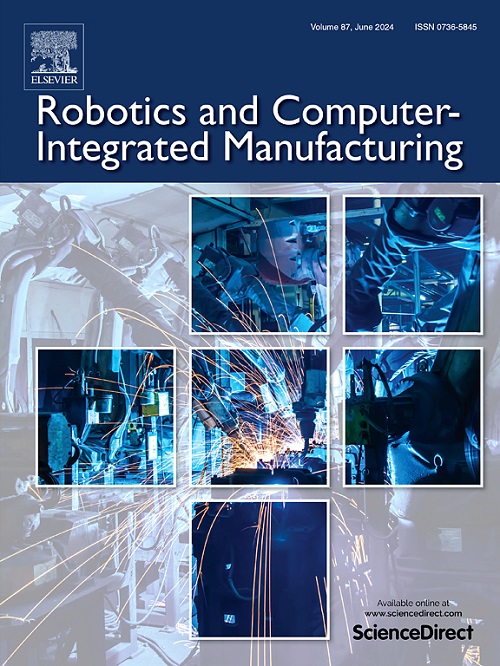A parallel network model: Intelligent monitoring of tool wear under variable working conditions
IF 11.4
1区 计算机科学
Q1 COMPUTER SCIENCE, INTERDISCIPLINARY APPLICATIONS
引用次数: 0
Abstract
Accurate monitoring of tool wear states and wear values is crucial for reducing machine tool failures and ensuring machining accuracy and efficiency. However, wear monitoring faces significant challenges due to the imbalance of wear samples and the dynamic changes in the coupling relationships among multi-source sensing signals. Additionally, varying processing conditions further complicate the accurate tracking of wear. To address these challenges, an evolutionary spatio-temporal parallel network model is proposed. The model first employs a cyclic consistency classification enhancement network to accurately identify the real-time wear state of the tool. Then, it utilizes a parallel network to uncover the spatio-temporal coupling relationships within multi-source sensing data. Based on this, an evolutionary monitoring mechanism drives the continuous evolution and update of the model, adapting to real-time wear state and working condition changes, thus achieving precise tool wear monitoring under variable working conditions. Our self-built grinding wheel wear dataset and PHM2010 milling public dataset are used to verify the effectiveness of the method. Experimental results demonstrate that the proposed method improves prediction accuracy by 55.85 %, 10.26 %, and 50.14 % over existing methods on the C1, C4, and C6 datasets of PHM2010, respectively, while achieving a remarkable accuracy advantage of over 96.63 % in grinding wheel wear prediction.
一种并行网络模型:变工况下刀具磨损的智能监测
准确监测刀具的磨损状态和磨损值对于减少机床故障、保证加工精度和效率至关重要。然而,由于磨损样本的不平衡性和多源传感信号之间耦合关系的动态变化,磨损监测面临着巨大的挑战。此外,不同的加工条件进一步复杂化了准确跟踪磨损。为了解决这些问题,提出了一个演化的时空并行网络模型。该模型首先采用循环一致性分类增强网络,准确识别刀具的实时磨损状态。然后,利用并行网络揭示多源遥感数据的时空耦合关系。基于此,进化监测机制驱动模型不断进化和更新,适应实时磨损状态和工况变化,实现变工况下刀具磨损的精确监测。利用自建的砂轮磨损数据集和PHM2010磨铣公共数据集验证了该方法的有效性。实验结果表明,在PHM2010的C1、C4和C6数据集上,该方法的预测精度比现有方法分别提高了55.85%、10.26%和50.14%,在砂轮磨损预测方面取得了96.63%以上的精度优势。
本文章由计算机程序翻译,如有差异,请以英文原文为准。
求助全文
约1分钟内获得全文
求助全文
来源期刊
CiteScore
24.10
自引率
13.50%
发文量
160
审稿时长
50 days
期刊介绍:
The journal, Robotics and Computer-Integrated Manufacturing, focuses on sharing research applications that contribute to the development of new or enhanced robotics, manufacturing technologies, and innovative manufacturing strategies that are relevant to industry. Papers that combine theory and experimental validation are preferred, while review papers on current robotics and manufacturing issues are also considered. However, papers on traditional machining processes, modeling and simulation, supply chain management, and resource optimization are generally not within the scope of the journal, as there are more appropriate journals for these topics. Similarly, papers that are overly theoretical or mathematical will be directed to other suitable journals. The journal welcomes original papers in areas such as industrial robotics, human-robot collaboration in manufacturing, cloud-based manufacturing, cyber-physical production systems, big data analytics in manufacturing, smart mechatronics, machine learning, adaptive and sustainable manufacturing, and other fields involving unique manufacturing technologies.

 求助内容:
求助内容: 应助结果提醒方式:
应助结果提醒方式:


